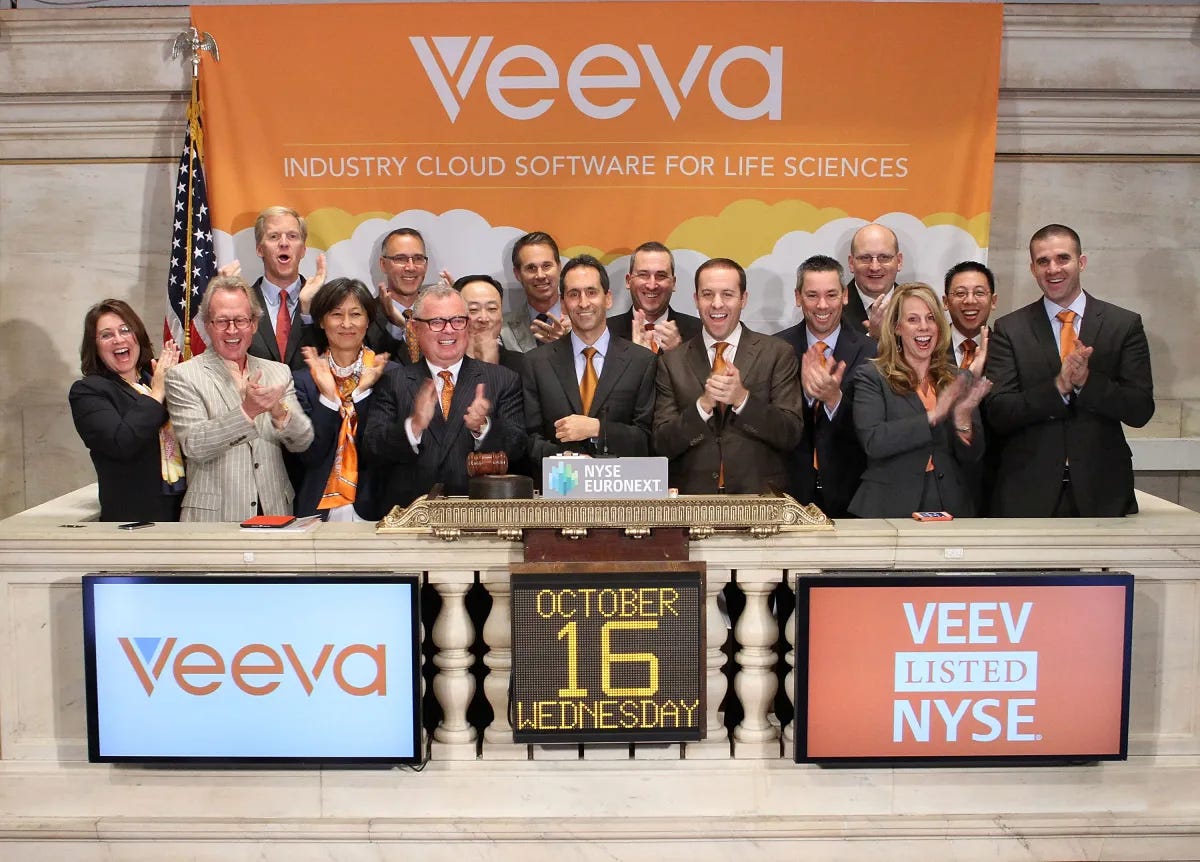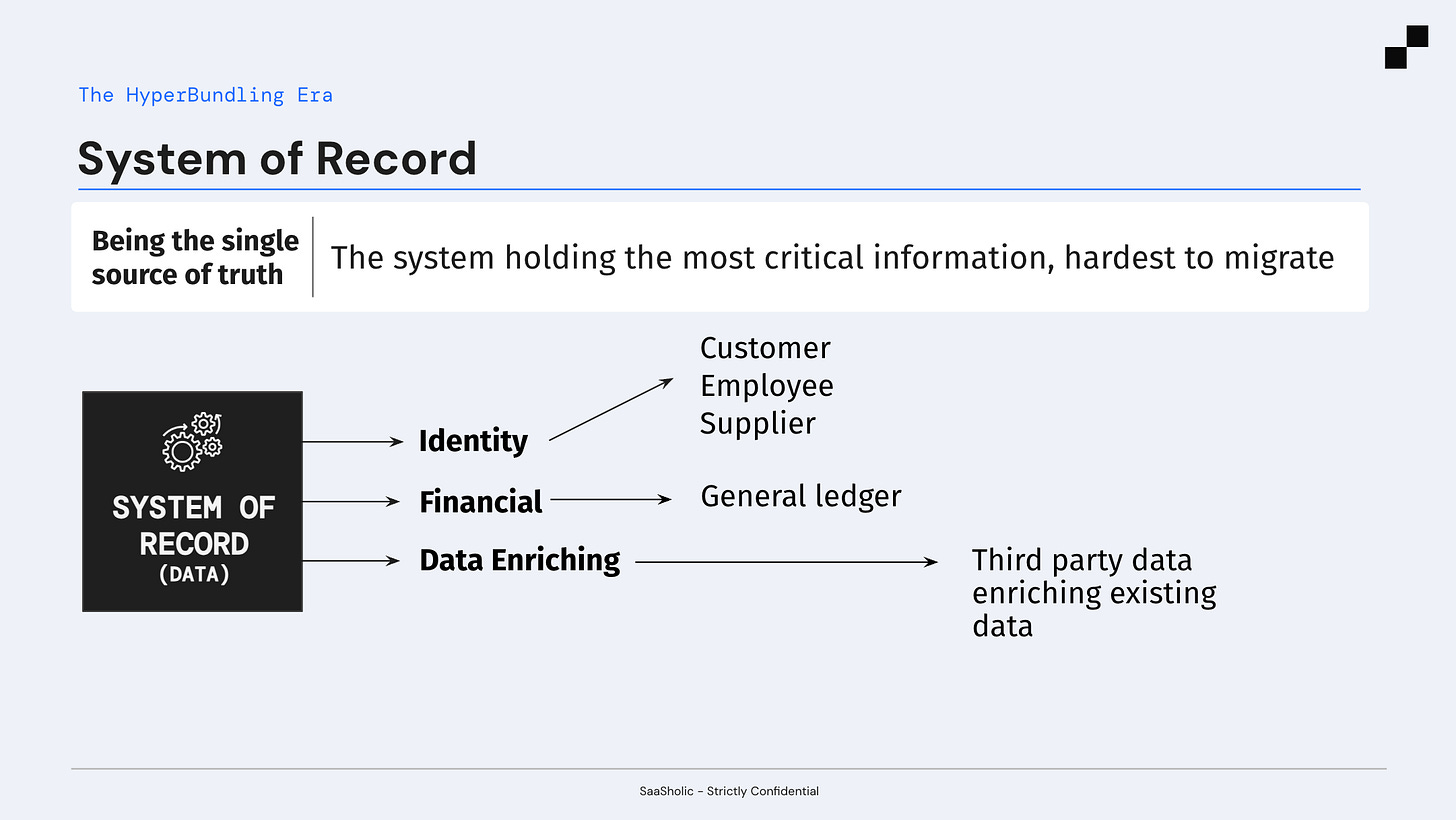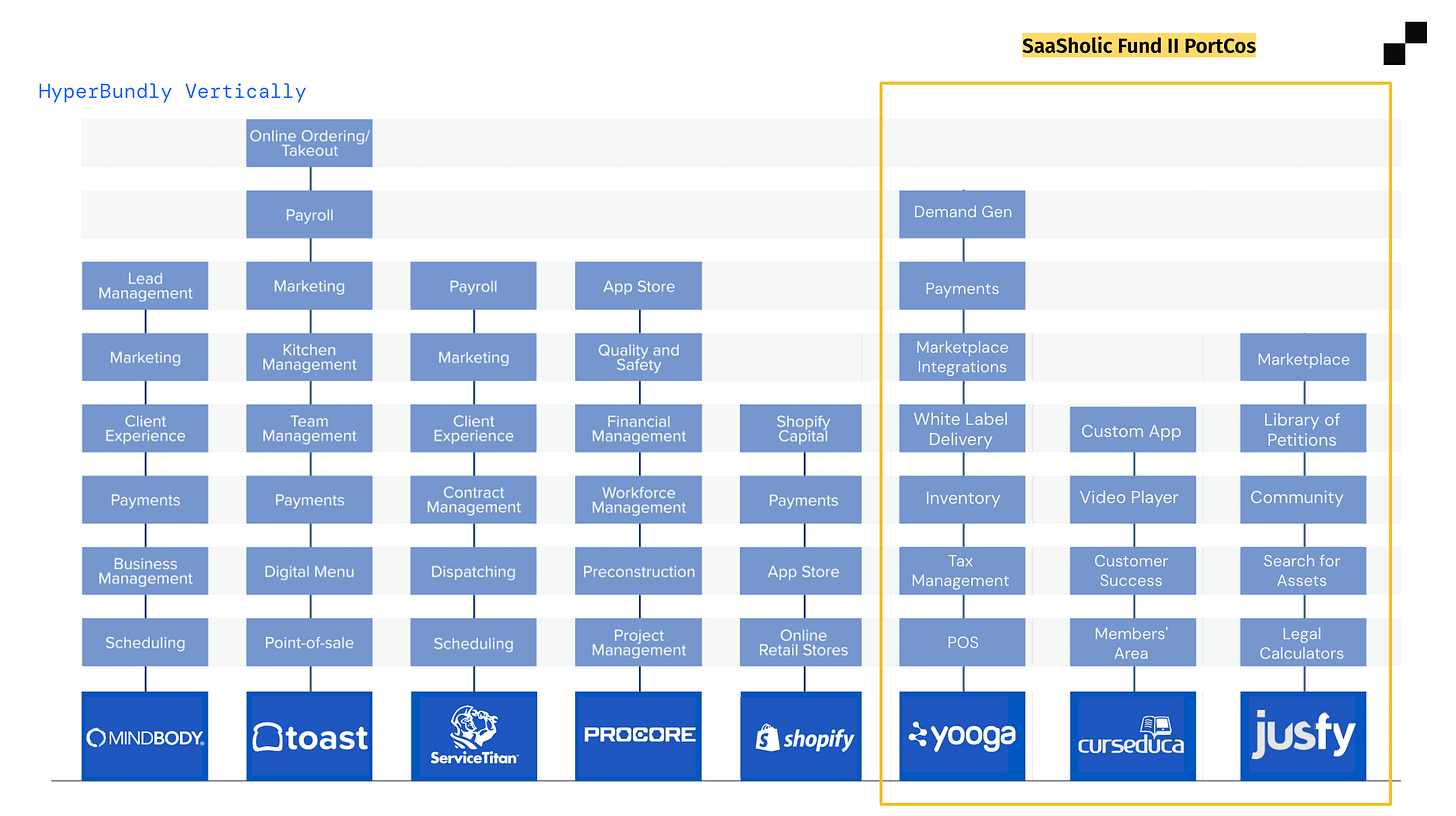AI Has Made Vertical SaaS the New Big Thing
Once considered a 'boring business' that VCs tended to avoid, it's interesting to see how LLMs have amplified the appeal of industry-specific software solutions.
In my investing career, one aspect that had a profound impact on my approach to evaluating early-stage startups was always exercising a significant amount of second-level thinking about the 'expansion opportunity' within any given addressable market where a SaaS company operates.
The reason I believe this is crucial when investing in Vertical SaaS lies in the fact that these businesses usually start by solving very small, niche opportunities before they begin compounding, as they invariably do. Growth in Vertical SaaS leads to the HyperBundle and the integration of an entire industry, ultimately becoming its ultimate operating system.
However, some years ago, venture capitalists tended to view the universe of Vertical SaaS with skepticism and a lack of enthusiasm, often referred to as a space with a low ceiling and a lack of innovation. The Vertical SaaS landscape was synonymous with antiquated legacy systems burdened by substantial technical debt.
First Act: The Transition from On-Premise to Cloud and Early Evidence of 'Fund-Return Material'
In the US, the year 2013 marked a significant milestone for the Vertical SaaS industry with the IPO of Veeva Systems VEEV 0.00%↑ . Originally a niche CRM for the life sciences sector, Veeva expanded its product offerings, compounded its stack, and began to compete with horizontal SaaS competitors.
Veeva was an outlier in terms of capital efficiency, raising only $7 million in venture funding. The company took six years to move from their initial $3 million angel round to a $4.4 billion market cap at the close of its first trading day. Veeva stands as a solid testament to the potential of Vertical SaaS startups, reflecting an era when the shift from on-premise to cloud computing greatly benefited new entrants.
Emergence Capital, the sole VC firm that placed a contrarian bet on Veeva at the time, saw their 31% stake increase to be worth 300x their initial investment at the company's IPO debut.
Second Act: Every Vertical SaaS Will Become a Fintech
Almost eight years after Veeva's IPO, another intriguing startup made its debut on the NYSE in September 2021—Toast TOST 0.00%↑, a Vertical SaaS targeting the highly fragmented sector of local, independent restaurants in the US. Toast debuted at $40 per share, valuing the company at a staggering $20 billion.
Unlike Veeva, Toast took 10 years from inception to IPO, during which it raised over $900 million in venture funding. Toast has taught VCs a significant lesson about the expansion potential of a Vertical SaaS' addressable market: the powerful combination of a constantly growing roadmap of niche, tailored products enhanced by embedded financial services is hard to beat.
Not long after selling his company Endeca to Oracle in 2011 for $1.1 billion, Steve Papa wrote a $500,000 check to three of his top engineers who had left his company to start Toast. In 2015, Steve recommended it to Bessemer Venture Partners, who led its $30 million Series B round, valuing the company at $100 million. At the IPO, Steve’s ownership was worth close to $3 billion.
P.S.: God, with all the hard work I put in as a VC, I'm hoping my time will come…
Third Act: The Modern Gold Rush – AI LLMs Leverage Proprietary Datasets in Vertical SaaS
One intriguing aspect of recent AI developments is how investors are still figuring out who's best positioned to capture the multibillion-dollar opportunity created by the AI platform shift. Will it be newly-formed early-stage entrants? Series A/B startups with an existing customer base and a relatively modern product? Or old incumbents with a large, innovation-hungry customer base?
In my view, Large Language Models (LLMs) present a tremendous opportunity for Vertical SaaS companies, especially those controlling a System of Record for core workflows.
By focusing on highly personalized pain points using proprietary data, these startups can effectively improve and expand their main products. They can also surpass competitors with superior automation capabilities. This leads to a cycle where increased usage generates more data, enhancing the algorithms. Over time, these platforms grows into indispensable, automated Systems of Intelligence (SOIs) that are deeply integrated into customer operations.
Now, the LLM revolution and AI advancements have made vertical SaaS even more appealing. With industry-specific data moats and fine-tuned workflows, vertical players become one of the best positioned businesses for AI integration. Some of the most promising AI applications in vertical SaaS include:
Predictive Analytics: Vertical SaaS platforms can use proprietary data and Machine Learning (ML) to provide predictive insights, optimizing customer decisions. By analyzing industry-specific datasets, AI can reveal hidden patterns and forecast future outcomes relevant to each business context. These capabilities give customers insight into risks, operations, and strategy specific to their niche.
Intelligent Workflow Automation: Vertical SaaS platforms can enhance efficiency through AI-enabled automation of repetitive, industry-specific tasks. Instead of relying on static rules, ML algorithms learn from customer usage data to optimize and personalize workflows.
Personalization: Vertical SaaS platforms can leverage their rich user data and AI to offer highly customized experiences that meet individual customer needs. ML models can dynamically tailor everything from UI design to content recommendations based on usage patterns and other attributes.
Natural Language Processing (NLP): Vertical SaaS platforms can utilize NLP to comprehend industry-specific terminology and unstructured text data. By training NLP models on their niche datasets, these companies can provide conversational interfaces and intelligent chatbot assistants finely-tuned for their customer's domain.
Cloud-based SaaS has been compounding since its early days, starting in 1999 with the foundation of Salesforce. It has turned into my investing obsession ever since I began angel investing in 2017. Although most of my angel portfolio and later as Managing Partner at SaaSholic comprises Horizontal SaaS, I believe Vertical SaaS has started showing very promising signs of traction in LatAm.
We've recently led the seed round for some very interesting Vertical SaaS opportunities out of our second fund, such as Yooga, Jusfy, and Curseduca. It’s been very exciting to learn how each of these companies is leveraging their products with existing AI capabilities.
The special combination of specialized datasets, strong customer loyalty, and adding AI to these platforms makes them very strong in the market. By using these strengths, vertical SaaS companies that own System of Record control points have the chance to stay ahead of others, including both old companies and new ones entering the market. We at SaaSholic see these companies as being at the front of a big change. They have the chance to build lasting leadership by combining AI with their proprietary data.






